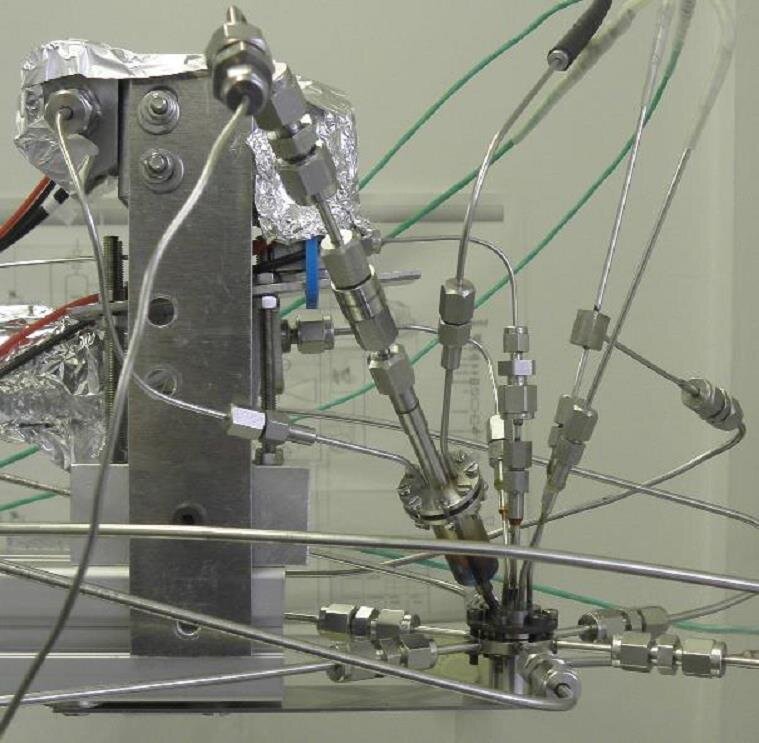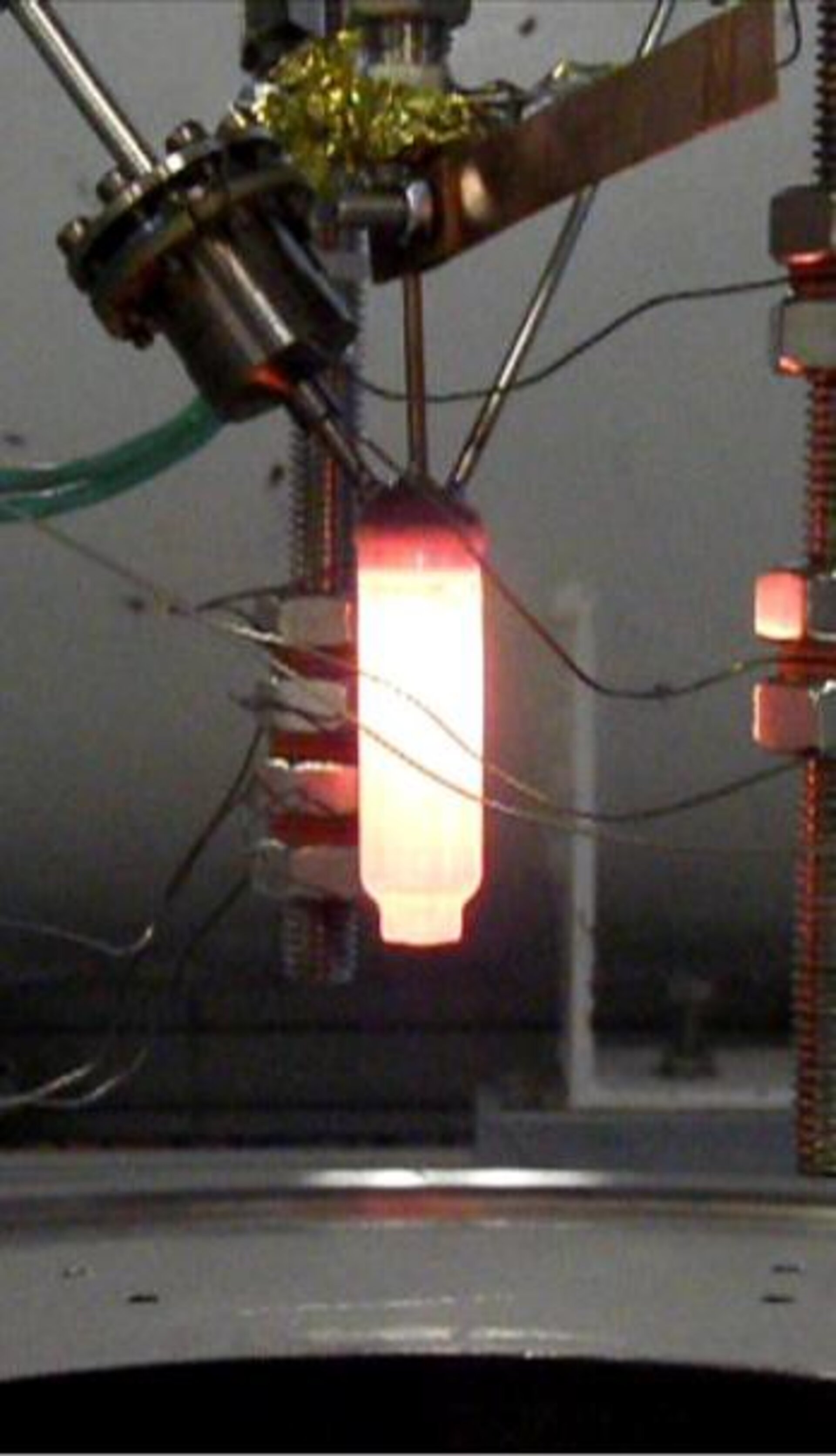Development of a low thrust bipropellant thruster based on green propellants
| Programme: | GSTP | Achieved TRL: | 3-4 |
| Reference: | G601-75MP | Closure: | 2016 |
| Contractor(s): | FOTEC (AT) | ||
State-of-the-art in-orbit propulsion systems, such as for attitude control, orbit insertion etc., are mostly hydrazine based. The main drawback of hydrazine based systems is the toxicity of these fuels and the associated costs for handling, transporting and storing. Besides that, hydrazine is on the candidate list of Substances of Very High Concern of the EU and MMH has been proposed to be put on this list very recently as well. This has led to an increased interest in alternative, so-called “green” propellants. One such a propellant is highly concentrated hydrogen peroxide. For a bipropellant thruster this could be combined with a benign fuel such as kerosene.
Since 2005 FOTEC, back then AIT, has been working on a bipropellant thruster based on hydrogen peroxide and kerosene (project known as Phase 0). Initially a feasibility study was performed under ESA contract (ESTEC/Contract No. 16914/02/NL/SFe). This study showed the general feasibility of ignition and combustion in a very small combustion chamber using hydrogen peroxide and kerosene.
In a follow-up contract, Phase 1 (ESTEC/Contract No. 22277/09/NL/RA) starting in 2009, the previously obtained results were verified, the understanding of the basic working principle increased and certain thruster characteristics improved. This culminated in a baseline thruster design besides that, several numerical models were developed and a market analysis was carried out. The latter resulted in establishment of the thrust to be around 1 N.
Objectives
The Phase 2 project is the second half of the follow-up of the Phase 0 project. The aim of this project is to establish an advanced bipropellant thruster, verification of analytical models, detailed experimental evaluation of the thruster at sea level conditions and establishment and definition of subsystem components. Two entities were involved in the Phase 2 project: FOTEC (initially AIT) and IC2MP (former LACCO). FOTEC was responsible for the overall project organisation, component and system design and testing. IC2MP was responsible for the manufacturing and monitoring the quality of the catalysts. The whole project can be subdivided into several distinct activities.

Achievements and status
A large number of catalysts were tested under a wide variety of conditions, including overloading, pre-heating, cold-start, long duration, short pulses etc. For this, catalysts with different geometrical and chemical properties were used. Typical investigated parameters were the catalysts length, cpsi, active phase loading, active pulse, substrate material etc. Furthermore detailed experimental studies were undertaken into injector designs. Different configurations were tested and the final design of the decomposition chamber injector was further optimised. The required L*value for the combustion chamber was determined experimentally by testing different chamber lengths.
A complete thruster was subjected to several different operational modes including steady state firing, long burn, pulse mode operation and minimum impulse bits. Finally, several metallic and non-metallic materials were systematically investigated with respect to their compatibility with hydrogen peroxide. Therefore, a dedicated rig was designed and manufactured.
Benefits
A typical application is would be the attitude and orbit control system thrusters for geostationary telecom satellites as well as Earth Observation satellites in LEO and GEO. Furthermore, any application that requires gas generation in a short time, but a limited storage volume prior to use could benefit from the development technology. Typical examples are airbags, lifting devices used during accidents and natural disasters involving scenarios of building destruction.
The principle technology feature is the decomposition of a liquid into gas producing a large change in volume.
Next steps
Five major fields require attention before proceeding with the thruster development:
- Catalyst lifetime; in-terms of total throughput as well as resilience to minimum impulse bits
- Propellants; the current HTP is not propellant grade and is known to cause problems with the catalyst, the type of kerosene is just what is available and not tuned for space applications
- Injector and ignition; especially the Kerosene injector requires further attention as it influences for a large part the rest of the thruster design
- Thermal design of the thruster; up to now the thermal design has not received the attention it deserves, it is known that hydrogen peroxide decomposition is very sensitive to this
- Compatibility testing; extension of the database of tested materials as well as other aspects of the compatibility that has not been investigated up to now (stress corrosion test etc.)


